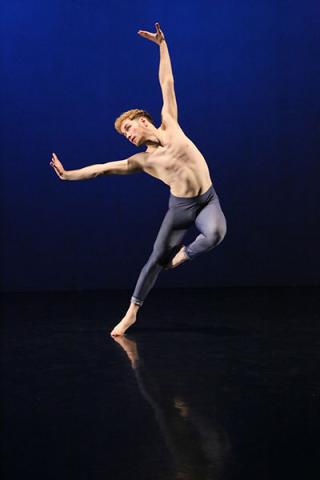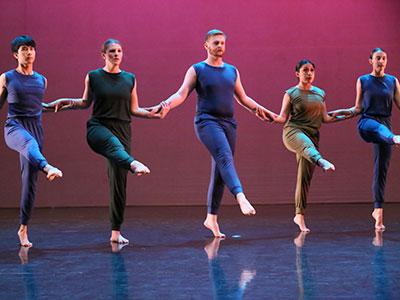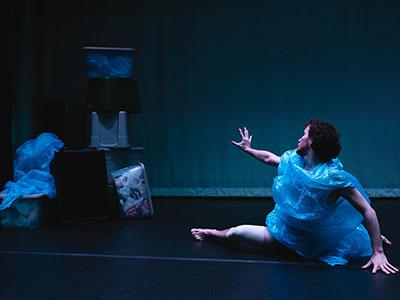Bringing polymer science to life: PhD student Joel K. Linebach choreographs dance inspired by his engineering research
Linebach’s “PHASIC” will premiere this weekend at Cleveland Dance Festival
Joel K. Linebach arrived at Case Western Reserve University in fall 2017 as an undergraduate student intending to pursue a degree in a scientific field. A longtime dancer, he set out to continue that passion only as a hobby through some of the university’s many dance-aligned student organizations.

But Linebach knew the option to incorporate dance into his education was there—and it took only one dance elective in his first semester to embrace the duality of the arts and engineering.
“Ever since that, it’s always been the two and figuring out how to balance and do both,” said Linebach, now a PhD student in macromolecular science and engineering.
Tomorrow (Nov. 8) at The Movement Project’s Cleveland Dance Festival, he will demonstrate how he’s not only done both, but weaved them together over eight years and four degrees from Case Western Reserve.
Linebach’s choreographed work “PHASIC,” inspired by polymer science, will debut Saturday, Nov. 8, at 5 p.m. at Westfield Studio Theatre (Idea Center at Playhouse Square) during the festival's Show 3. It will be performed by Linebach, alongside Christina Troyer and Hannah Boehringer, both 2025 CWRU graduates and master’s students.
Linebach will perform in his friend Renee Clippinger’s work during Show 2 at 3 p.m.
Explore the program and get tickets.
Inspiration in the lab
Linebach has been active in both engineering and dance during the course of his education at CWRU, earning a bachelor’s degree in dance, bachelor’s and master’s degrees in macromolecular science and engineering, and a Master of Fine Arts in Contemporary Dance.
For his PhD, Linebach works with Gary Wnek, chair of the Department of Macromolecular Science and Engineering at Case School of Engineering and the Joseph F. Toot, Jr., Professor of Engineering, to explore different paths of polymer research, including extrusion, recycling and high-performance films.

Polymers are, by definition, a group of small monomers that are bonded together. In many ways, the same is true of dance: Ensembles of individuals come together through bonds (theatrically or physically) to create a cohesive piece.
He wondered if dance could be a window into that complex work, embodying the processes at play in his research.
Throughout his education, he has drawn from these themes. His thesis project, “-MER,” pulled from imagery and concepts from polymer synthesis and structures.
“That was the homerun of that concert, I have to say it was a fan favorite,” Linebach said.
Another of Linebach’s pieces, “en vie aprés,” was an emotional take on the everlasting nature of these materials.
His new commissioned work for Cleveland Dance Festival will look specifically at two types of polymer structures: one that is created by strands of monomers that fold and zig-zag back and forth with highly aligned middles and curved ends, and another that has more centralized structures that extrude outward—lamella and spherulites, respectively.

“I’m using this imagery to create this dance, pulling some of the more complex topics into a physical form that people can see, of course putting a little bit of an artistic spin on it,” Linebach explained.
Linebach hopes the piece will serve as a short introduction into polymer science, showing viewers how polymers are able to organize themselves into structures that strengthen or weaken them.
“The cool thing about dance is it’s a universal language,” Linebach said. “There’s something inherently visceral to both the performer and the audience members.”




